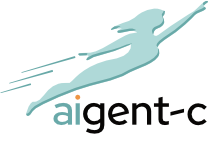The AI gold rush is quieting down. That’s not a crisis—it’s a course correction.
If you’ve been following the arc of AI over the past few years, you’ve probably noticed a shift. The fever-pitch headlines and breathless forecasts are starting to fade. In their place? More scrutiny, tougher questions, and—thankfully—a stronger focus on real-world value.
In Gartner’s famous “Hype Cycle,” we’ve entered the Trough of Disillusionment—the moment when inflated expectations give way to a more sobering reality. The Economist’s recent piece lays it out clearly: AI’s promise isn’t gone, but it’s being recalibrated.
That’s a good thing.
Because when the novelty wears off, something better can take its place: utility.
The shift from showcase to substance
The early phase of AI’s adoption was dominated by what you might call “demo-ware”—impressive outputs with vague use cases. Now we’re being asked the harder questions:
- Where does this actually fit in our workflow?
- Can this reduce cost or improve output?
- How do we govern this responsibly?
These are the right questions. They push builders, users, and leaders to move beyond gimmicks and toward sustainable, business-integrated AI.
For SMBs, this is an opening
While tech giants recalibrate and headlines cool, small and mid-sized businesses (SMBs) have a unique window. Why? Because they don’t need AI to be magical—they need it to be useful. They care about whether it can:
- Cut the time it takes to prep for a sales call
- Summarize internal knowledge without hiring an analyst
- Help one marketer do the work of three—without burning out
In this new phase, practicality is the differentiator.
What survives now is what serves
This moment rewards solutions that:
- Fit into existing tools and teams without major disruption
- Solve boring but high-impact problems (think: data entry, research, scheduling)
- Treat AI as a teammate, not a replacement
This is where Aigent-C focuses its attention: crafting AI agents that quietly—and reliably—free people to do what only they can do. Creative work. Strategic thinking. Relationship building. The stuff no algorithm can automate.
Why this phase is fertile ground
Disillusionment isn’t the end of the story. It’s a turning point.
This is when standards are defined, bad actors fade, and the survivors mature. It’s when AI moves from something leaders are “experimenting with” to something teams rely on.
It’s not the most glamorous part of the journey. But it might be the most meaningful.

